Tourists often ask if these whales stay here all year round. Skjalfandi has no true resident whales. Generally, the toothed whales stay around Iceland for most of the year. However, the baleen whales migrate between warm-water breeding grounds and cold-water feeding grounds. For example, humpback whales spend winter in Cape Verde and the Caribbean.
Altogether, 23 species of whale have been recorded in Icelandic waters. There are two living groups of whales: baleen (Mysticeti) and toothed (Odontoceti) whales.
The toothed whales stay around Iceland for most of the year. However, the baleen whales migrate between warm-water breeding grounds and cold-water feeding grounds. As an example, humpback whales spend winter in Cape Verde and the Caribbean.
The most common in Skjálfandi Bay are listed below:
Baleen Whale
Baleen is a filter-feeder system inside the mouths of baleen whales. The baleen system works by a whale opening its mouth underwater and taking in water. The whale then pushes the water out and animals such as krill are filtered by the baleen and remain as a food source for the whale.
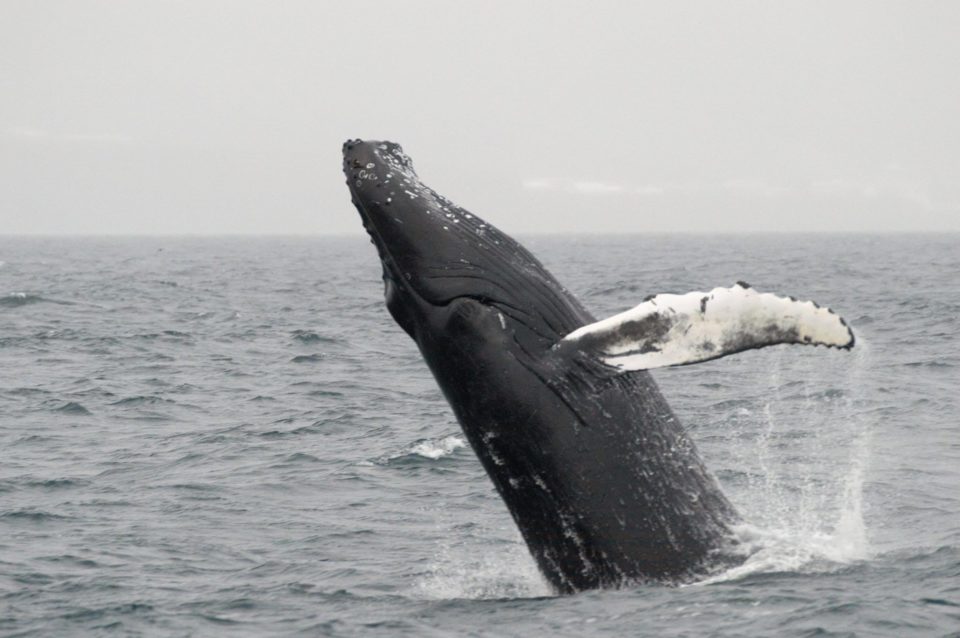
Humpback Whale
- Lat. Megaptera novaeangliae.
- Isl. Hnúfubakur.
- 13 – 16 m length, 25 – 30 tons.
- Feed on krill and small schooling fish, e.g. juvenile Atlantic salmon, herring, capelin, Atlantic mackerel, pollock and haddock.
- Males sing a complex song that can last for hours at a time.
- Individuals can be identified by patterns on their fluke.
Image © Salka whale watching.
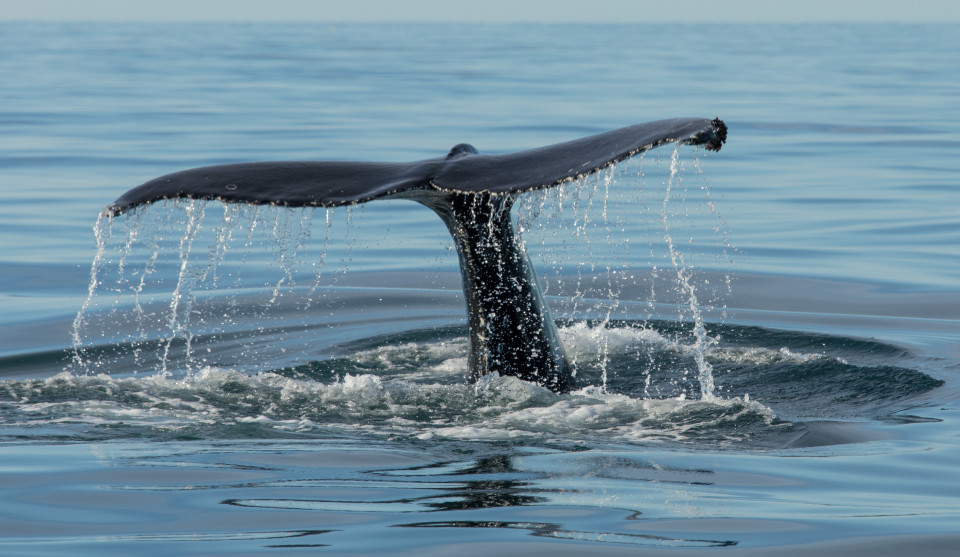
Common or Northern Minke Whale
- Lat. Balaenoptera acutorostrata.
- Isl. Hrefna.
- 6.9 – 8 m length, 4 – 5 tons.
- Feed on herring, krill, capelin and sand eel.
- Can create sounds of over 150 decibels.
- They can live up to 60 years.
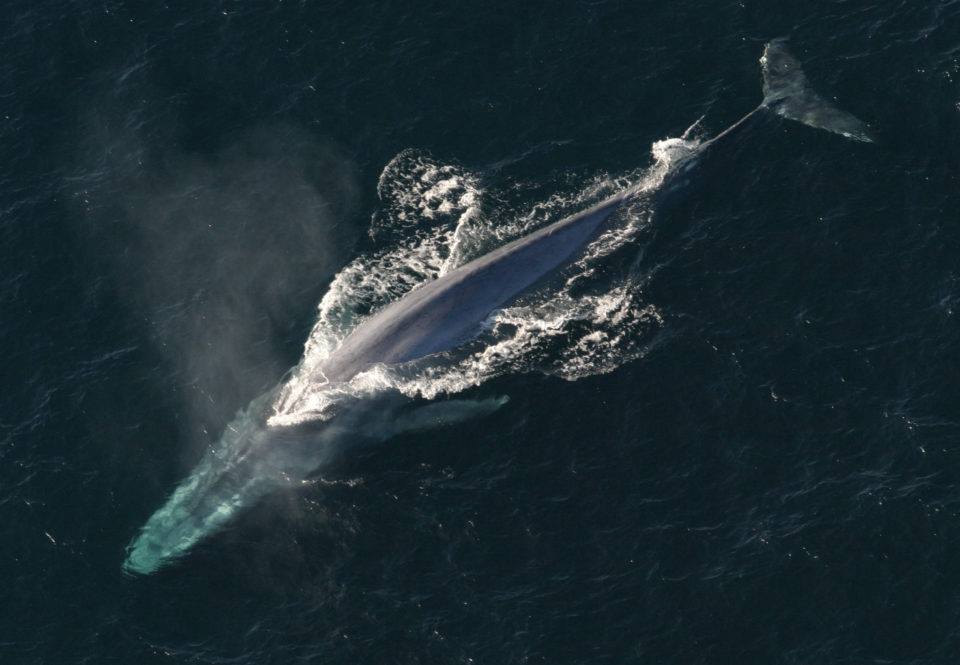
Blue Whale
- Lat. Balaenoptera musculus.
- Isl. Steypireyður.
- About 28 m length, 45 – 136 tons.
- Feed on krill.
- A blue whale tongue weights about 2.7 tons, the heart has the wight of a car.
- A child can fit through the blowhole and a small child can swim through the blood vessels.
- It is estimated that they can live up to 80 years.
Image @ Wikipedia, NOAA Photo library anim 1754.
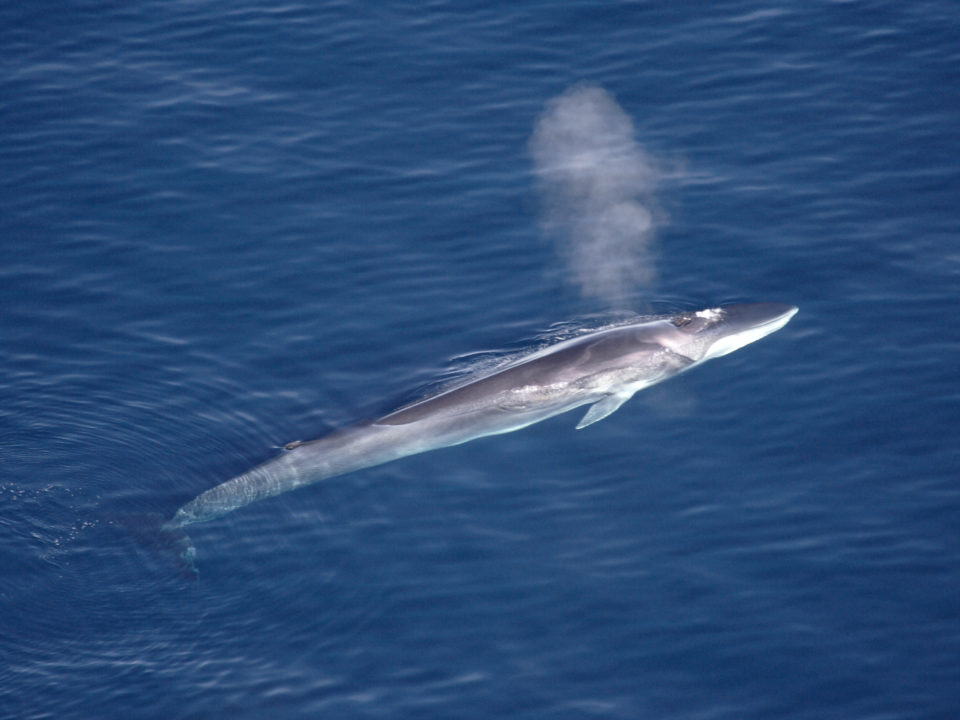
Fin Whale
- Lat. Balaenoptera physalus.
- Isl. Langreyður.
- 18.5 – 20 m length, 38.5 – 50.5 tons.
- Feed on small schooling fish, squid and crustaceans, including copepods and krill
- The left side of the head is dark grey, while the right side exhibits a complex pattern of contrasting light and dark markings.
- It has the nickname “greyhound of the sea” because they can speed up to 46 km/h.
Image @ Wikipedia, Aqqa Rosing Asvid.
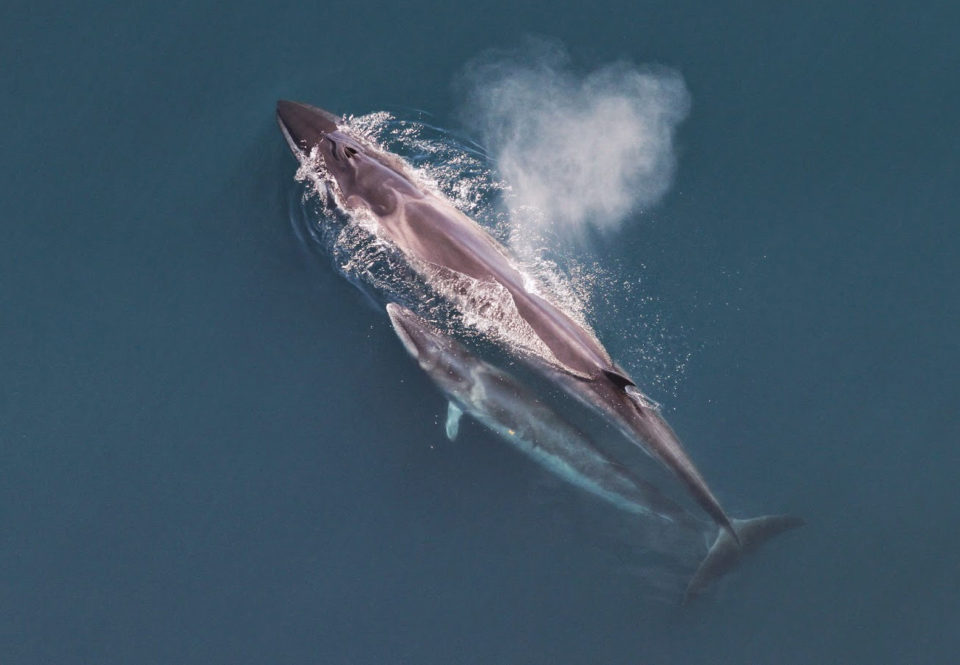
Sei Whale
- Lat. Balaenoptera borealis.
- Isl. Sandreyður.
- Up to 19.5 m length, 15 – 20 tons.
- Feed on zooplankton and small fish filtered through baleen plates.
- Live in all oceans.
- The name comes from the Norwegian word for Pollock as they appear at the same time of year as the whale.
Image @ Wikipedia, Christin Khan.
Toothed Whales
The toothed whales are a cetaceans possessing teeth, including dolphins, porpoises and other whales.
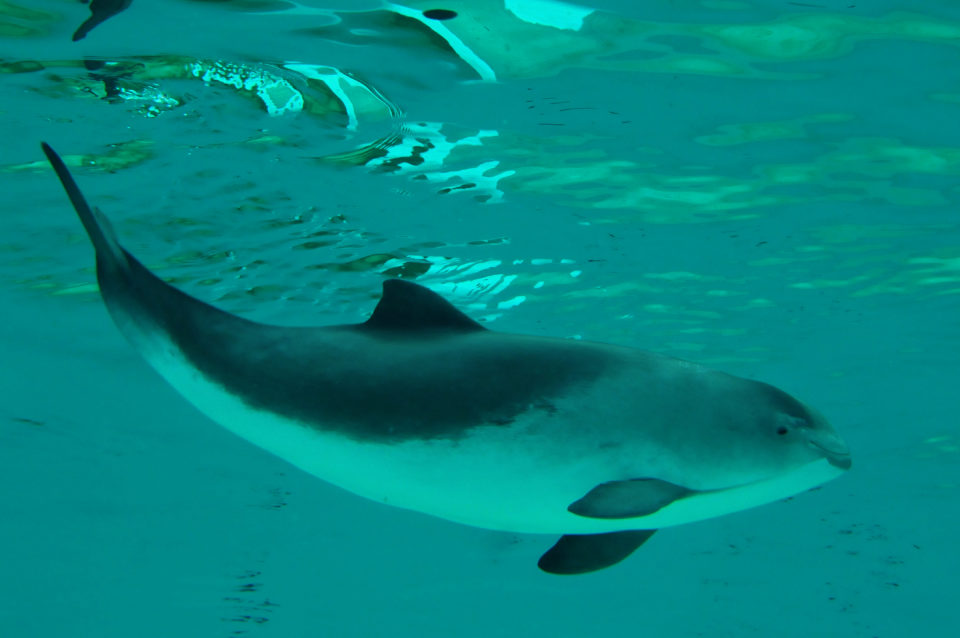
Harbour Porpoise
- Lat. Phocoena phocoena.
- Isl. Hnísa.
- 1.4 – 1.9 m length, ~ 70kg.
- Feeds on small pelagic schooling fish, e.g. herring, capelin, sprat and crustaceans.
- The English name porpoise comes from Medieval Latin porcopiscus, which is a compound of porcus (pig) and piscus (fish).
Image @ Wikipedia, Ecomar, Salko de Wolf Den Hoorn Texel.
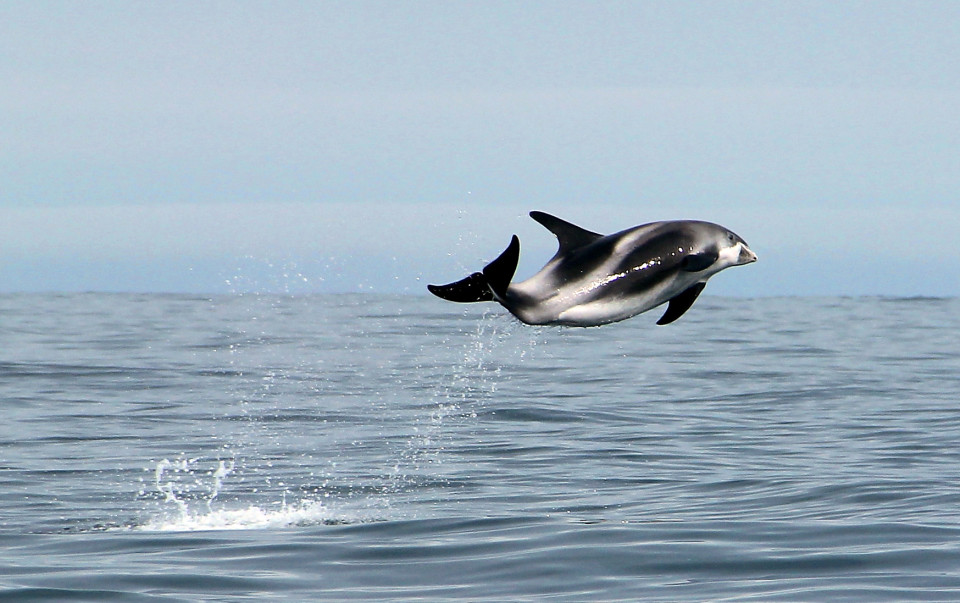
White-beaked Dolphin
- Lat. Lagenorhynchus albirostris.
- Isl. Hnýðingur.
- 2.3 – 3.1 m length, 180 – 354 kg.
- Feeds on gadoid fishes, particularly cod, haddock and whiting.
- Females reach their adult size at around five years of age, and are sexually mature at 6 – 10 years.
- Can reach a speed of 45 km/h.
Image © Sarah Arndt, Gentle Giants.
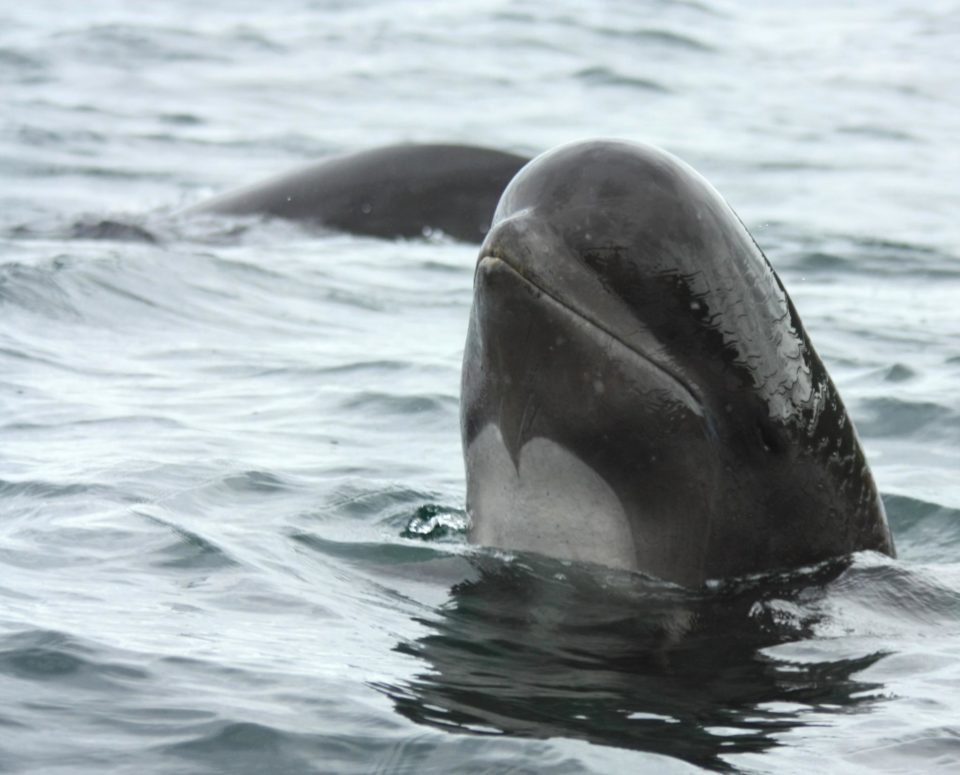
Long-Finned Pilot Whale
- Lat. Globicephala melas.
- Isl. Grindhvalur.
- 5.7 – 6.7 m length, 1.3 – 2.3 tons.
- Feed on deep-water squid and other cephalopods.
- A large species of oceanic dolphins.
- The species most commonly involved in mass strandings in Iceland.
Image @ Wikipedia, Barney Moss.
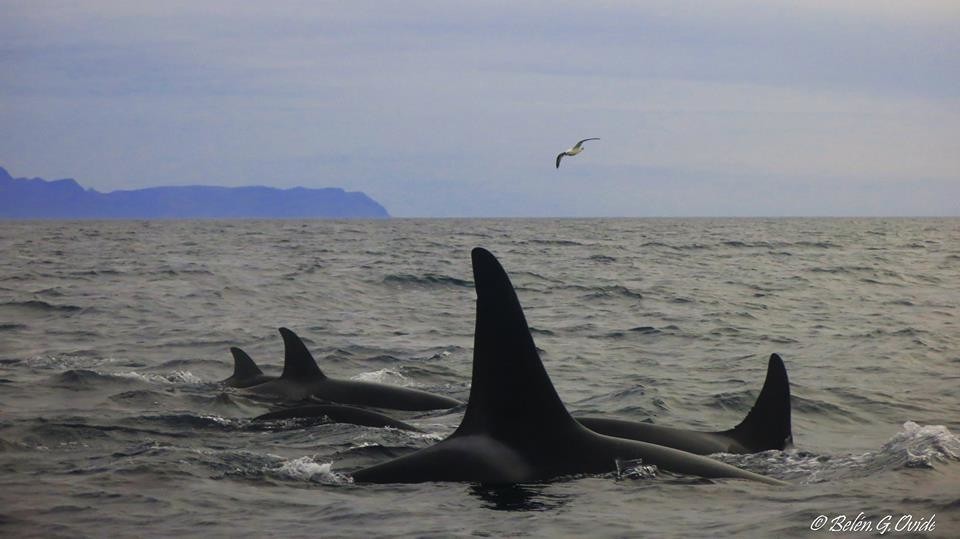
Orca
- Lat. Orcinus orca.
- Isl. Háhyrningur.
- 5 – 8 m length, 3 – 4 tons.
- Orcas hunt a variety of prey, including fish, cephalopods, mammals and sea birds.
- Can reach a speed of 56 km/h.
- The genus name Orcinus means “of the kingdom of the dead” and the whale is also known as ‘killer whale’. The full name Orcinus Orca translates as “beast from the kingdom of the Dead”.
Image © Belen Garcia Ovide, Gentle Giants.
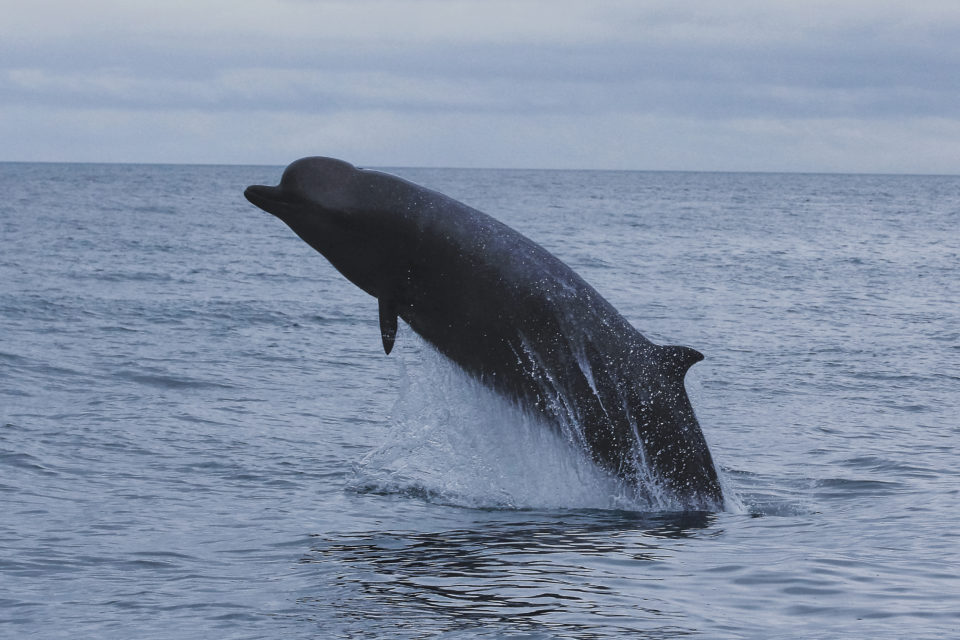
Northern Bottlenose Whale
- Lat. Hyperoodon ampullatus.
- Isl. Andarnefja.
- Up to 9.8 m length, 5.8 – 7.3 tons.
- Feed on deep water squid and bottom fish.
- Known to approach and appear curious about vessels.
Image @ Etienne Menétrey
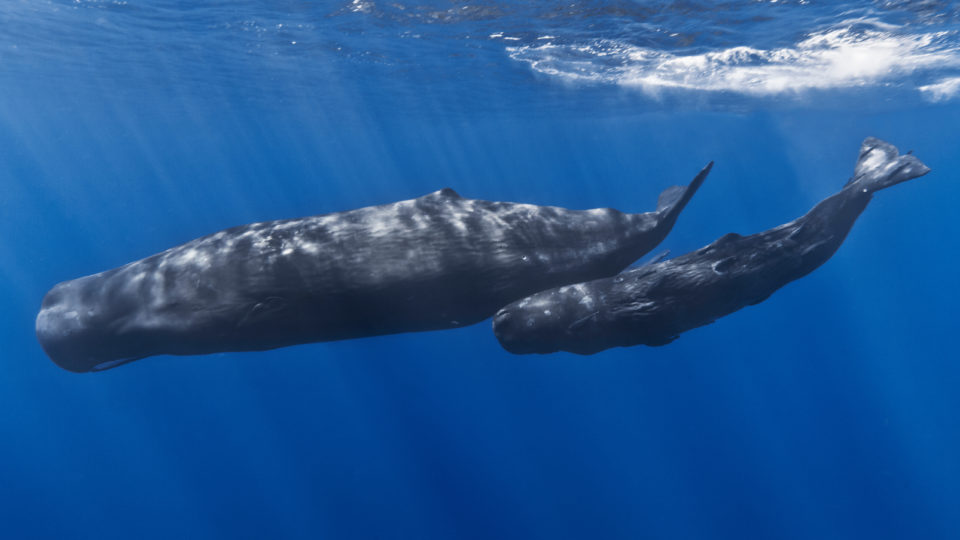
Sperm Whale or Cachalot
- Lat. Physeter macrocephalus.
- Isl. Búrhvalur.
- 16 – 20.5 m length, up to 57 tons.
- Feed on giant squid, octopuses and fish, e.g. demersal rays.
- Largest of the toothed whales, plunging to 2.205 m (second deepest diving mammal).
- Sperm whaling was a major industry in the 19th century, immortalised in the novel Moby Dick.
Image @ Wikipedia, Gabriel Barathie.